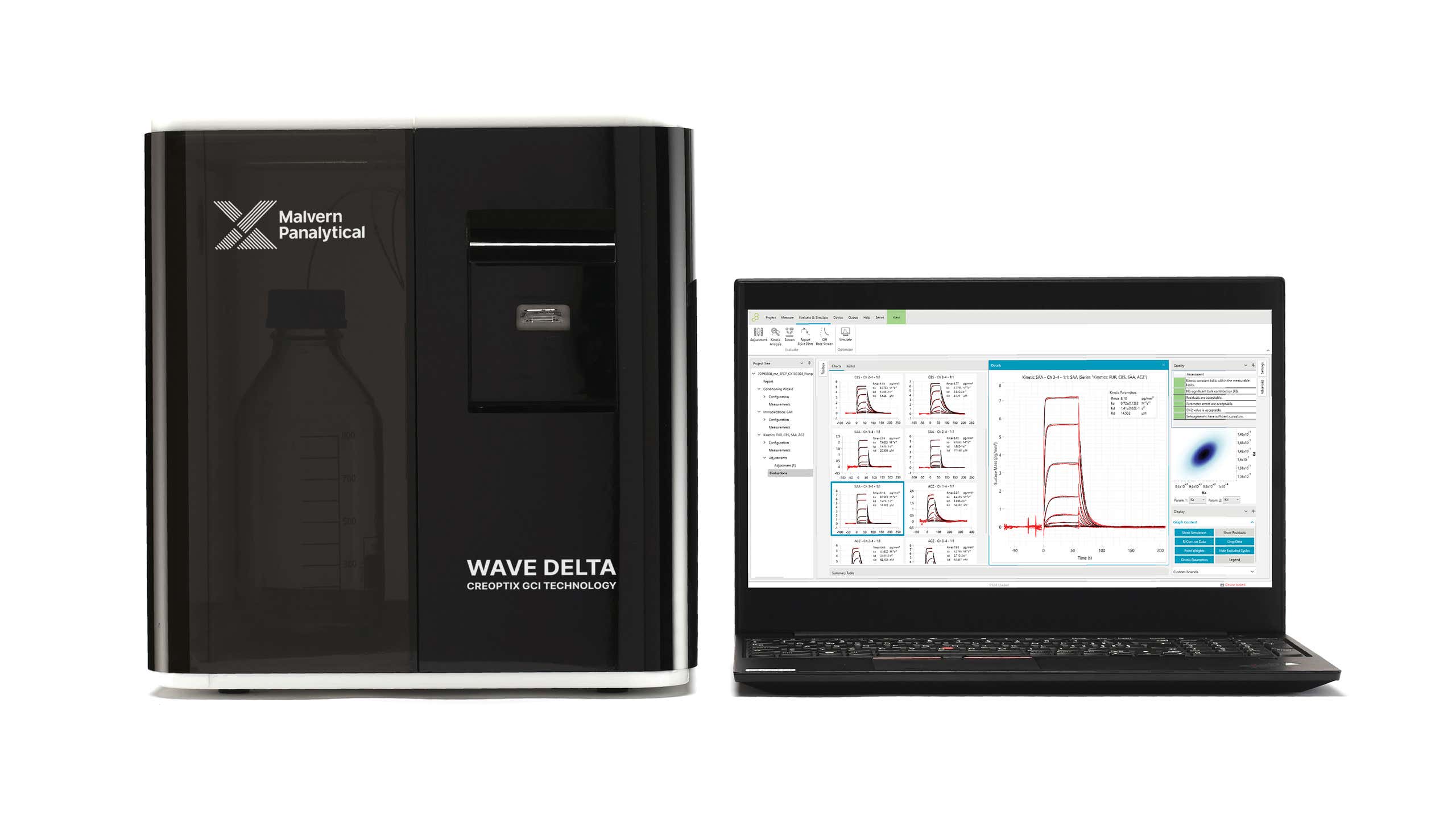Overview
In contrast to traditional, multicycle kinetics measurements, waveRAPID generates a pulsating concentration profile by injecting the analyte at the same concentration, but multiple times while increasing the duration. waveRAPID (Repeated Analyte Pulses of Increasing Duration) injects a single concentration, pulsing the sample over the sensing surface at increasing durations, meaning kinetics can be derived from a single well without the requirement of serial dilutions.
Now, 96 different interactions can be analyzed from a single 96-well microtiter plate as compared to only 16 with a traditional assay using a six-fold dilution series. Find out more in our waveRAPID whitepaper:
- how the new waveRAPID method is different from traditional kinetics measurements
- how to achieve high sensitivity while accommodating the toughest samples
- how to measure more interactions in hours, rather than days
How it works
What are the benefits of waveRAPID?
With no need for serial dilutions or DMSO corrections, set-up time is significantly reduced, runs are faster, and wells are freed up to run more samples. In summary, waveRAPID offers the following benefits:
- Save time and costs: more interactions in hours, not days
- Get more insight: capacity to screen broad kinetic range
- Run more samples: transform 96 well plate to 96 datasets
- Ease-of-use: accelerate kinetic screen
In this video, Dr. Kaspar Cottier, CTO and Founder of Creoptix, will explain why the measurement of kinetics is important when screening molecules, outlining the technology behind waveRAPID, how you can use the system, and the associated benefits.
Are you taking weeks from hit-to-lead progression when it could be days?
In this technical note, conducted by an HTS drug discovery group of Idorsia Pharmaceuticals Ltd, we demonstrate the power of waveRAPID in streamlining the kinetic characterization of large numbers of drug hit compounds, with results comparable to traditional SPR and high reproducibility.
Learn more about:
- Screening of crude mixtures: small molecules, fragments and peptides
- Fast hit-to-lead progression
- Unstable targets
- Difficult compounds


![[wave rapid 1.jpg] wave rapid 1.jpg](https://dam.malvernpanalytical.com/c0cb0361-05fe-433a-a45c-ae6000a586e9/wave%20rapid%201_Original%20file.jpg)